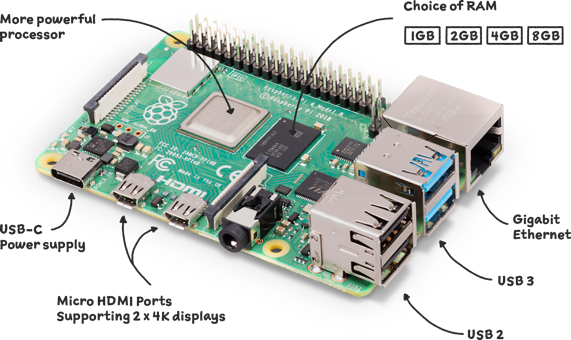Unleashing the Power: Setting Up Your Raspberry Pi from Scratch - Part 2: Advanced Server Configuration

Part 2: Advanced Server Configuration - Web Servers, Network, and Memory Optimization
Let’s dive deeper into configuring your Raspberry Pi for server-like tasks, covering web servers, network accessibility, and memory optimization.
Step 1: Installing and Configuring a Web Server (Nginx or Apache2 - Choose One!)
Why? To host websites, web applications, or APIs.
- Nginx:
- Pros:
- High performance: Excellent for serving static content and handling many concurrent connections.
- Efficient: Low resource consumption.
- Reverse proxy: Useful for load balancing and caching.
- Cons:
- Steeper learning curve for complex configurations.
- Fewer modules compared to Apache2.
- Applications:
- High-traffic websites.
- Reverse proxy servers.
- API gateways.
- Installation:
1 2 3 4
sudo apt update sudo apt install nginx -y sudo systemctl enable nginx sudo systemctl start nginx
- Verification: Access your Raspberry Pi’s IP address in a web browser.
- Pros:
- Apache2:
- Pros:
- Highly customizable: Extensive module support.
- Easy to configure: User-friendly configuration files.
- Large community support.
- Cons:
- Higher resource consumption.
- Can be less performant under heavy load.
- Applications:
- Dynamic websites (e.g., WordPress).
- Web applications requiring specific modules.
- Development servers.
- Installation:
1 2 3 4
sudo apt update sudo apt install apache2 -y sudo systemctl enable apache2 sudo systemctl start apache2
- Verification: Access your Raspberry Pi’s IP address in a web browser.
Important: Choose either Nginx or Apache2, not both, to avoid port conflicts.
- Pros:
Step 2: Enabling pihostname.local (Avahi/Bonjour)
Why? To simplify local network access.
- Pros:
- User-friendly: Access via hostname, not IP.
- Automatic discovery.
- Cons:
- Limited to local network.
- relies on avahi being installed and running.
- Applications:
- Simplified local network administration.
- Easy access to Raspberry Pi services from other local devices.
- Installation:
1
sudo apt install avahi-daemon -y
- Usage:
ssh pi@pihostname.localorhttp://pihostname.local.
Step 3: Upgrading Swap Memory
Why? To improve system stability and performance when RAM is insufficient.
- Pros:
- Prevents out-of-memory errors.
- Allows running more applications.
- Cons:
- Slower performance compared to RAM.
- May reduce SD card lifespan with excessive use.
- Applications:
- Running memory-intensive applications.
- Hosting multiple services.
- Compiling large projects.
- Checking Current Swap:
1 2
sudo swapon --show free -h
- Editing Swap Configuration:
1
sudo nano /etc/dphys-swapfileModify
CONF_SWAPSIZE. - Restarting Swap:
1 2
sudo /etc/init.d/dphys-swapfile stop sudo /etc/init.d/dphys-swapfile start
- Verifying New Swap:
1 2
sudo swapon --show free -h
Step 4: Using No-IP for Dynamic DNS
Why? To access your Raspberry Pi from the internet with a dynamic IP address.
- Pros:
- Remote access from anywhere.
- Consistent hostname.
- Cons:
- Requires a third-party service.
- Security risks if not configured properly.
- Applications:
- Remote web server access.
- Remote SSH access.
- Remote home automation server.
- No-IP Account and Hostname: Create an account and add a hostname.
- No-IP Dynamic Update Client:
1 2 3 4
wget [http://www.noip.com/client/linux/noip-duc-linux.tar.gz](http://www.noip.com/client/linux/noip-duc-linux.tar.gz) tar xzf noip-duc-linux.tar.gz cd noip-2.1.9-1/ # Version number may differ sudo make install
- No-IP Client Configuration:
1
sudo noip2 -C
- Starting the Client:
1
sudo noip2 - Auto-Start on Boot: Add
/usr/local/bin/noip2to/etc/rc.local. - Router Port Forwarding: Configure port forwarding to your Raspberry Pi.

 Never miss a story from us, subscribe to our newsletter
Never miss a story from us, subscribe to our newsletter